Side effect of calcium tablets. Side Effects of Calcium Tablets: Unveiling the Good, Bad, and Ugly of Calcium Supplementation
What are the potential benefits and risks of calcium supplementation. How does calcium intake affect human health. Is calcium supplementation necessary for osteoporosis prevention. What are the recommended daily intake levels for calcium. How does calcium supplementation impact cardiovascular health.
The Role of Calcium in Human Health: A Comprehensive Overview
Calcium, an essential mineral, plays a crucial role in numerous bodily functions. It is primarily known for its importance in maintaining strong bones and teeth, but its significance extends far beyond skeletal health. Calcium is involved in muscle function, nerve signaling, hormone secretion, and blood clotting. Understanding the intricate balance of calcium in the body is key to appreciating both the benefits and potential risks of calcium supplementation.
Calcium Homeostasis: A Delicate Balance
The human body maintains a tightly regulated calcium balance through a complex interplay of hormones and organs. This process, known as calcium homeostasis, involves the parathyroid glands, kidneys, and intestines. When calcium levels in the blood drop, the parathyroid glands secrete parathyroid hormone (PTH), which stimulates calcium release from bones, increases calcium reabsorption in the kidneys, and enhances calcium absorption in the intestines.

Conversely, when calcium levels are too high, the thyroid gland releases calcitonin, which inhibits bone resorption and promotes calcium excretion through the kidneys. This intricate system ensures that calcium levels remain within a narrow range, essential for optimal bodily function.
Dietary Sources of Calcium
While calcium supplements are widely available, obtaining calcium from dietary sources is generally preferred. Some excellent food sources of calcium include:
- Dairy products (milk, yogurt, cheese)
- Leafy green vegetables (kale, spinach, collard greens)
- Fortified foods (orange juice, cereals, plant-based milk alternatives)
- Fish with edible bones (sardines, canned salmon)
- Nuts and seeds (almonds, sesame seeds)
Consuming a varied diet rich in these foods can help meet calcium needs for most individuals. However, certain populations may struggle to obtain adequate calcium through diet alone, leading to the consideration of calcium supplementation.
The Good: Potential Benefits of Calcium Supplementation
Calcium supplementation has been widely promoted for its potential health benefits, particularly in bone health and osteoporosis prevention. However, the scientific evidence supporting these benefits is mixed, and the effectiveness of calcium supplements may vary depending on individual factors.
Bone Health and Osteoporosis Prevention
Calcium is a primary component of bone tissue, and adequate calcium intake is essential for maintaining bone density and strength. Some studies have suggested that calcium supplementation may help reduce the risk of fractures, especially in older adults with low dietary calcium intake. However, the effectiveness of calcium supplements for fracture prevention remains a topic of debate in the scientific community.
A meta-analysis published in the American Journal of Clinical Nutrition in 2007 found that calcium intake was associated with a modest reduction in hip fracture risk. However, more recent research, including a systematic review and meta-analysis published in JAMA in 2017, has questioned the efficacy of calcium supplements in preventing fractures in community-dwelling older adults.
Other Potential Benefits
Beyond bone health, calcium supplementation has been investigated for its potential benefits in other areas of health:
- Blood pressure regulation: Some studies suggest that calcium intake may have a modest effect on lowering blood pressure, particularly in individuals with low calcium intake.
- Colorectal cancer prevention: Limited evidence indicates that calcium supplementation may reduce the risk of colorectal adenomas, precursors to colorectal cancer.
- Weight management: Some research suggests that calcium intake may play a role in weight regulation, although the evidence is inconclusive.
While these potential benefits are intriguing, it’s important to note that the evidence supporting them is often mixed or limited, and more research is needed to establish definitive conclusions.
The Bad: Potential Risks and Side Effects of Calcium Supplementation
Despite the potential benefits, calcium supplementation is not without risks. Several studies have raised concerns about the safety of high-dose calcium supplements, particularly regarding cardiovascular health and kidney stone formation.
Cardiovascular Risks
One of the most significant concerns surrounding calcium supplementation is its potential impact on cardiovascular health. Some studies have suggested that calcium supplements may increase the risk of heart attacks and cardiovascular events, particularly in older adults.
A study published in JAMA Internal Medicine in 2013 found that high intake of supplemental calcium was associated with an increased risk of cardiovascular disease mortality in men, but not in women. Another review published in the Journal of Clinical Hypertension in 2017 highlighted the growing concern about the potential cardiovascular risks of calcium supplementation.
The mechanism behind this potential risk is not fully understood, but it may be related to the rapid increase in blood calcium levels following supplement ingestion, which could lead to calcium deposition in blood vessels.
Kidney Stone Formation
Calcium supplements have been associated with an increased risk of kidney stone formation, particularly in individuals with a history of kidney stones. This risk appears to be higher with calcium carbonate supplements compared to calcium citrate.
Interestingly, dietary calcium intake has been associated with a reduced risk of kidney stones, highlighting the importance of obtaining calcium from food sources when possible.
Gastrointestinal Side Effects
Some individuals may experience gastrointestinal side effects from calcium supplements, including:
- Constipation
- Bloating
- Gas
- Nausea
These side effects are generally mild and can often be mitigated by taking smaller doses throughout the day or switching to a different form of calcium supplement.
The Ugly: Controversies and Debates Surrounding Calcium Supplementation
The field of calcium supplementation is rife with controversies and ongoing debates among researchers and healthcare professionals. These debates highlight the complexity of nutrition science and the challenges in making broad recommendations for supplement use.
Conflicting Research Findings
One of the most significant challenges in the field of calcium supplementation is the conflicting nature of research findings. While some studies suggest benefits for bone health and fracture prevention, others find no significant effect or even potential harm.
These discrepancies may be due to various factors, including:
- Differences in study populations
- Variations in supplement dosage and form
- Differences in baseline calcium intake and vitamin D status
- Methodological differences between studies
The conflicting nature of these findings makes it challenging for healthcare providers and consumers to make informed decisions about calcium supplementation.
The Calcium-Vitamin D Relationship
Another area of debate is the relationship between calcium and vitamin D supplementation. Vitamin D is essential for calcium absorption, and many studies have examined the effects of combined calcium and vitamin D supplementation.
Some researchers argue that vitamin D status is a crucial factor in determining the effectiveness and safety of calcium supplements. However, the optimal ratio of calcium to vitamin D supplementation and the importance of vitamin D status in calcium metabolism remain topics of ongoing research and debate.
Recommended Calcium Intake: Guidelines and Considerations
Given the complexities surrounding calcium supplementation, it’s essential to understand the current recommendations for calcium intake and the factors that may influence individual needs.
Recommended Dietary Allowances (RDAs)
The Institute of Medicine has established Recommended Dietary Allowances (RDAs) for calcium intake based on age and gender:
- Adults 19-50 years: 1,000 mg/day
- Adult men 51-70 years: 1,000 mg/day
- Adult women 51-70 years: 1,200 mg/day
- Adults 71 years and older: 1,200 mg/day
These recommendations are intended to meet the needs of 97-98% of healthy individuals in each age and gender category.
Factors Influencing Calcium Needs
Several factors can influence an individual’s calcium requirements, including:
- Age and gender
- Pregnancy and lactation
- Menopausal status
- Physical activity level
- Certain medical conditions (e.g., inflammatory bowel disease, celiac disease)
- Medications that affect calcium metabolism
These factors should be considered when assessing an individual’s calcium needs and determining whether supplementation is necessary.
Alternatives to Calcium Supplementation: Optimizing Dietary Intake
Given the potential risks associated with calcium supplements, many healthcare providers and nutritionists advocate for obtaining calcium primarily through dietary sources whenever possible.
Strategies for Increasing Dietary Calcium Intake
Here are some strategies for optimizing dietary calcium intake:
- Incorporate dairy products into meals and snacks
- Choose calcium-fortified foods and beverages
- Include leafy green vegetables in salads and cooked dishes
- Experiment with calcium-rich non-dairy foods like tofu, almonds, and sardines
- Use calcium-set tofu in stir-fries and smoothies
By focusing on dietary sources of calcium, individuals can often meet their calcium needs without relying on supplements.
The Role of Vitamin D in Calcium Absorption
Optimizing vitamin D status is crucial for maximizing calcium absorption from dietary sources. Vitamin D can be obtained through sunlight exposure, dietary sources (such as fatty fish and fortified foods), and supplements if necessary.
Ensuring adequate vitamin D levels may help improve calcium absorption and reduce the need for high-dose calcium supplements.
Making Informed Decisions: Balancing the Pros and Cons of Calcium Supplementation
Given the complex nature of calcium supplementation and its potential benefits and risks, making informed decisions about supplement use requires careful consideration of individual factors and consultation with healthcare providers.
Who May Benefit from Calcium Supplements?
Calcium supplements may be beneficial for certain populations, including:
- Individuals with low dietary calcium intake
- Postmenopausal women at risk for osteoporosis
- People with conditions that impair calcium absorption
- Vegans and individuals with lactose intolerance who struggle to obtain calcium from dietary sources
For these groups, the potential benefits of calcium supplementation may outweigh the risks. However, individual assessment is crucial.
Considerations for Safe Supplement Use
If calcium supplementation is deemed necessary, consider the following guidelines for safe use:
- Choose the right form: Calcium citrate is generally better absorbed than calcium carbonate, especially for older adults or those taking acid-reducing medications.
- Spread out doses: Take smaller doses (500 mg or less) throughout the day to improve absorption and reduce the risk of side effects.
- Combine with vitamin D: Ensure adequate vitamin D intake to optimize calcium absorption.
- Monitor total intake: Consider calcium from both dietary sources and supplements to avoid excessive intake.
- Regular reassessment: Periodically review the need for supplementation with a healthcare provider.
By following these guidelines and working closely with healthcare providers, individuals can make informed decisions about calcium supplementation that balance potential benefits and risks.
The good, the bad, and the ugly of calcium supplementation: a review of calcium intake on human health
1. Reid IR. Should we prescribe calcium supplements for osteoporosis prevention? J Bone Metab. 2014;21(1):21–28. [PMC free article] [PubMed] [Google Scholar]
2. Gahche J, Bailey R, Burt V, et al. Dietary supplement use among U.S. adults has increased since NHANES III (1988–1994) NCHS Data Brief. 2011;61:1–8. [PubMed] [Google Scholar]
3. Booth A, Camacho P. A Closer look at calcium absorption and the benefits and risks of dietary versus supplemental calcium. Postgrad Med. 2013;125(6):73–81. [PubMed] [Google Scholar]
4. Bischoff-Ferrari HA, Dawson-Hughes B, Baron JA, et al. Calcium intake and hip fracture risk in men and women: a meta-analysis of prospective cohort studies and randomized controlled trials. Am J Clin Nutr. 2007;86(6):1780–1790. [PubMed] [Google Scholar]
5. Zhao JG, Zeng XT, Wang J, Liu L. Association Between Calcium or Vitamin D Supplementation and Fracture Incidence in Community-Dwelling Older Adults: A Systematic Review and Meta-analysis. JAMA. 2017;318(24):2466–2482. [PMC free article] [PubMed] [Google Scholar]
JAMA. 2017;318(24):2466–2482. [PMC free article] [PubMed] [Google Scholar]
6. Xiao Q, Murphy RA, Houston DK, Harris TB, Chow WH, Park Y. Dietary and supplemental calcium intake and cardiovascular disease mortality: the National Institutes of Health-AARP diet and health study. JAMA Intern Med. 2013;173(8):639–646. [PMC free article] [PubMed] [Google Scholar]
7. Tankeu AT, Ndip Agbor V, Noubiap JJ. Calcium supplementation and cardiovascular risk: A rising concern. J Clin Hypertens. 2017;19(6):640–646. [PMC free article] [PubMed] [Google Scholar]
8. Reid IR, Birstow SM, Bolland MJ. Calcium and Cardiovascular Disease. Endocrinol Metab. 2017;32(3):339–349. [PMC free article] [PubMed] [Google Scholar]
9. Emkey RD, Emkey GR. Calcium metabolism and correcting calcium deficiencies. Endocrinol Metab Clin North Am. 2012;41(3):527–556. [PubMed] [Google Scholar]
10. Institute of Medicine (US) Committee to Review Dietary Reference Intakes for Vitamin D and Calcium . In: Dietary Reference Intakes for Calcium and Vitamin D. Ross AC, Taylor CL, Yaktine AL, Del Valle HB, editors. Washington, DC: National Academies Press; 2011. [Accessed September 13, 2018]. Available from: http://www.ncbi.nlm.nih.gov/books/NBK56070/ [Google Scholar]
Ross AC, Taylor CL, Yaktine AL, Del Valle HB, editors. Washington, DC: National Academies Press; 2011. [Accessed September 13, 2018]. Available from: http://www.ncbi.nlm.nih.gov/books/NBK56070/ [Google Scholar]
11. Brini M, Calì T, Ottolini D, Carafoli E. Intracellular calcium homeostasis and signaling. Met Ions Life Sci. 2013;12:119–168. [PubMed] [Google Scholar]
12. Krebs J, Agellon LB, Michalak M. Ca(2+) homeostasis and endoplasmic reticulum (ER) stress: An integrated view of calcium signaling. Biochem Biophys Res Commun. 2015;460(1):114–121. [PubMed] [Google Scholar]
13. Kleeman CR, Massry SG, Coburn JW. The clinical physiology of calcium homeostasis, parathyroid hormone, and calcitonin. I. Calif Med. 1971;114(3):16–43. [PubMed] [Google Scholar]
14. Blaine J, Chonchol M, Levi M. Renal control of calcium, phosphate, and magnesium homeostasis. Clin J Am Soc Nephrol. 2015;10(7):1257–1272. [PMC free article] [PubMed] [Google Scholar]
15. Watts NB, Bilezikian JP, Camacho PM, et al. AACE Osteoporosis Task Force American Association of Clinical Endocrinologists Medical Guidelines for Clinical Practice for the diagnosis and treatment of postmenopausal osteoporosis. Endocr Pract. 2010;16(Suppl 3):1–37. [PMC free article] [PubMed] [Google Scholar]
AACE Osteoporosis Task Force American Association of Clinical Endocrinologists Medical Guidelines for Clinical Practice for the diagnosis and treatment of postmenopausal osteoporosis. Endocr Pract. 2010;16(Suppl 3):1–37. [PMC free article] [PubMed] [Google Scholar]
16. Weaver CM, Gordon CM, Janz KF, et al. The National Osteoporosis Foundation’s position statement on peak bone mass development and lifestyle factors: a systematic review and implementation recommendations. Osteoporos Int. 2016;27(4):1281–1386. [PMC free article] [PubMed] [Google Scholar]
17. Harvey NC, Biver E, Kaufman JM, et al. The role of calcium supplementation in healthy musculoskeletal ageing: An expert consensus meeting of the European Society for Clinical and Economic Aspects of Osteoporosis, Osteoarthritis and Musculoskeletal Diseases (ESCEO) and the International Foundation for Osteoporosis (IOF) Osteoporos Int. 2017;28(2):447–462. [PMC free article] [PubMed] [Google Scholar]
18. Straub DA. Calcium supplementation in clinical practice: a review of forms, doses, and indications. Nutr Clin Pract. 2007;22(3):286–296. [PubMed] [Google Scholar]
Nutr Clin Pract. 2007;22(3):286–296. [PubMed] [Google Scholar]
19. Radford LT, Bolland MJ, Mason B, et al. The Auckland calcium study: 5-year post-trial follow-up. Osteoporos Int. 2014;25(1):297–304. [PubMed] [Google Scholar]
20. Reid IR, Mason B, Horne A, et al. Randomized controlled trial of calcium in healthy older women. Am J Med. 2006;119(9):777–785. [PubMed] [Google Scholar]
21. Tang BM, Eslick GD, Nowson C, Smith C, Bensoussan A. Use of calcium or calcium in combination with vitamin D supplementation to prevent fractures and bone loss in people aged 50 years and older: a meta-analysis. Lancet. 2007;370(9588):657–666. [PubMed] [Google Scholar]
22. Quesada-Gómez JM, Diaz-Curiel M, Sosa-Henriquez M, et al. Low calcium intake and inadequate vitamin D status in postmenopausal osteoporotic women. J Steroid Biochem Mol Biol. 2013;136:175–177. [PubMed] [Google Scholar]
23. Swaim RA, Barner JC, Brown CM. The relationship of calcium intake and exercise to osteoporosis health beliefs in postmenopausal women. Res Social Adm Pharm. 2008;4(2):153–163. [PubMed] [Google Scholar]
Res Social Adm Pharm. 2008;4(2):153–163. [PubMed] [Google Scholar]
24. Jackson RD, LaCroix AZ, Gass M, et al.Women’s Health Initiative Investigators Calcium plus vitamin D supplementation and the risk of fractures. N Engl J Med. 2006;354(7):669–683. [PubMed] [Google Scholar]
25. US Preventive Services Task Force. Grossman DC, Curry SJ, et al. Vitamin D, Calcium, or Combined Supplementation for the Primary Prevention of Fractures in Community-Dwelling Adults: US Preventive Services Task Force Recommendation Statement. JAMA. 2018;319(15):1592–1599. [PubMed] [Google Scholar]
26. Islam MZ, Shamim AA, Viljakainen HT, et al. Effect of vitamin D, calcium and multiple micronutrient supplementation on vitamin D and bone status in Bangladeshi premenopausal garment factory workers with hypovitaminosis D: a double-blinded, randomised, placebo-controlled 1-year intervention. Br J Nutr. 2010;104(2):241–247. [PubMed] [Google Scholar]
27. Marino R, Misra M. Bone health in primary ovarian insufficiency. Semin Reprod Med. 2011;29(4):317–327. [PubMed] [Google Scholar]
Semin Reprod Med. 2011;29(4):317–327. [PubMed] [Google Scholar]
28. Buppasiri P, Lumbiganon P, Thinkhamrop J, Ngamjarus C, Laopaiboon M. Calcium supplementation (other than for preventing or treating hypertension) for improving pregnancy and infant outcomes. Cochrane Database Syst Rev. 2011;10(10):CD007079. [PubMed] [Google Scholar]
29. Thomas M, Weisman SM. Calcium supplementation during pregnancy and lactation: effects on the mother and the fetus. Am J Obstet Gynecol. 2006;194(4):937–945. [PubMed] [Google Scholar]
30. Jarjou LM, Laskey MA, Sawo Y, Goldberg GR, Cole TJ, Prentice A. Effect of calcium supplementation in pregnancy on maternal bone outcomes in women with a low calcium intake. Am J Clin Nutr. 2010;92(2):450–457. [PMC free article] [PubMed] [Google Scholar]
31. Reid IR, Ames R, Mason B, et al. Randomized controlled trial of calcium supplementation in healthy, nonosteoporotic, older men. Arch Intern Med. 2008;168(20):2276–2282. [PubMed] [Google Scholar]
32. Noe EB, Chon SJ, Kim MK, et al. Associations between dietary calcium intake with prevalence of metabolic syndrome and changes in bone mineral density among Korean population. Maturitas. 2015;81(1):171. [Google Scholar]
Noe EB, Chon SJ, Kim MK, et al. Associations between dietary calcium intake with prevalence of metabolic syndrome and changes in bone mineral density among Korean population. Maturitas. 2015;81(1):171. [Google Scholar]
33. Dibba B, Prentice A, Ceesay M, Stirling DM, Cole TJ, Poskitt EM. Effect of calcium supplementation on bone mineral accretion in gambian children accustomed to a low-calcium diet. Am J Clin Nutr. 2000;71(2):544–549. [PubMed] [Google Scholar]
34. Chan R, Leung J, Woo J. A prospective cohort study examining the associations of dietary calcium intake with all-cause and cardiovascular mortality in older Chinese community-dwelling people. PLoS One. 2013;8(11):e80895. [PMC free article] [PubMed] [Google Scholar]
35. Li K, Kaaks R, Linseisen J, Rohrmann S. Associations of dietary calcium intake and calcium supplementation with myocardial infarction and stroke risk and overall cardiovascular mortality in the Heidelberg cohort of the European Prospective Investigation into Cancer and Nutrition study (EPIC-Heidelberg) Heart. 2012;98(12):920–925. [PubMed] [Google Scholar]
2012;98(12):920–925. [PubMed] [Google Scholar]
36. Bostick RM, Kushi LH, Wu Y, Meyer KA, Sellers TA, Folsom AR. Relation of calcium, vitamin D, and dairy food intake to ischemic heart disease mortality among postmenopausal women. Am J Epidemiol. 1999;149(2):151–161. [PubMed] [Google Scholar]
37. Reid IR, Mason B, Horne A, et al. Effects of calcium supplementation on serum lipid concentrations in normal older women: a randomized controlled trial. Am J Med. 2002;112(5):343–347. [PubMed] [Google Scholar]
38. Reid IR, Horne A, Mason B, Ames R, Bava U, Gamble GD. Effects of calcium supplementation on body weight and blood pressure in normal older women: a randomized controlled trial. J Clin Endocrinol Metab. 2005;90(7):3824–3829. [PubMed] [Google Scholar]
39. Witteman JC, Willett WC, Stampfer MJ, et al. A prospective study of nutritional factors and hypertension among US women. Circulation. 1989;80(5):1320–1327. [PubMed] [Google Scholar]
40. Ascherio A, Rimm EB, Giovannucci EL, et al. A prospective study of nutritional factors and hypertension among US men. Circulation. 1992;86(5):1475–1484. [PubMed] [Google Scholar]
A prospective study of nutritional factors and hypertension among US men. Circulation. 1992;86(5):1475–1484. [PubMed] [Google Scholar]
41. Duhig KE, Shennan AH. Recent advances in the diagnosis and management of pre-eclampsia. F1000 Prime Rep. 2015;7:24. [PMC free article] [PubMed] [Google Scholar]
42. World Health Organization . Guideline: Calcium Supplementation in Pregnant Women. Geneva: World Health Organization; 2013. [Accessed September 13, 2018]. Available from: http://www.ncbi.nlm.nih.gov/books/NBK154180/ [Google Scholar]
43. Hofmeyr GJ, Atallah AN, Duley L. Calcium supplementation during pregnancy for preventing hypertensive disorders and related problems. Cochrane Database Syst Rev. 2006;3(3):CD001059. [PubMed] [Google Scholar]
44. Galas A, Augustyniak M, Sochacka-Tatara E. Does dietary calcium interact with dietary fiber against colorectal cancer? A case-control study in Central Europe. Nutr J. 2013;12:134. [PMC free article] [PubMed] [Google Scholar]
45. Terry P, Baron JA, Bergkvist L, Holmberg L, Wolk A. Dietary calcium and vitamin D intake and risk of colorectal cancer: a prospective cohort study in women. Nutr Cancer. 2002;43(1):39–46. [PubMed] [Google Scholar]
Terry P, Baron JA, Bergkvist L, Holmberg L, Wolk A. Dietary calcium and vitamin D intake and risk of colorectal cancer: a prospective cohort study in women. Nutr Cancer. 2002;43(1):39–46. [PubMed] [Google Scholar]
46. Baron JA, Beach M, Mandel JS, et al. Calcium supplements for the prevention of colorectal adenomas. Calcium Polyp Prevention Study Group. N Engl J Med. 1999;340(2):101–107. [PubMed] [Google Scholar]
47. Welberg JWM, Kleibeuker JH, Dermeer RV, Mulder NH, de Vries EGE, Vries E. Calcium and the Prevention of Colon Cancer. Scand J Gastroenterol. 1991;26(Sup 188):52–59. [PubMed] [Google Scholar]
48. Kim KZ, Shin A, Kim J, et al. Association between CASR polymorphisms, calcium intake, and colorectal cancer risk. PLoS One. 2013;8(3):e59628. [PMC free article] [PubMed] [Google Scholar]
49. Taylor EN, Curhan GC. Determinants of 24-hour urinary oxalate excretion. Clin J Am Soc Nephrol. 2008;3(5):1453–1460. [PMC free article] [PubMed] [Google Scholar]
50. Curhan GC, Willett WC, Speizer FE, Spiegelman D, Stampfer MJ. Comparison of dietary calcium with supplemental calcium and other nutrients as factors affecting the risk for kidney stones in women. Ann Intern Med. 1997;126(7):497–504. [PubMed] [Google Scholar]
Curhan GC, Willett WC, Speizer FE, Spiegelman D, Stampfer MJ. Comparison of dietary calcium with supplemental calcium and other nutrients as factors affecting the risk for kidney stones in women. Ann Intern Med. 1997;126(7):497–504. [PubMed] [Google Scholar]
51. Khan MI, Waguespack SG, Hu MI, Mi H. Medical management of post-surgical hypoparathyroidism. Endocr Pract. 2011;17(Suppl 1):18–25. [PubMed] [Google Scholar]
52. Pentti K, Tuppurainen MT, Honkanen R, et al. Use of calcium supplements and the risk of coronary heart disease in 52–62-year-old women: The Kuopio Osteoporosis Risk Factor and Prevention Study. Maturitas. 2009;63(1):73–78. [PubMed] [Google Scholar]
53. Prince RL, Devine A, Dhaliwal SS, Dick IM. Effects of calcium supplementation on clinical fracture and bone structure: results of a 5-year, double-blind, placebo-controlled trial in elderly women. Arch Intern Med. 2006;166(8):869–875. [PubMed] [Google Scholar]
54. Warensjö E, Byberg L, Melhus H, et al.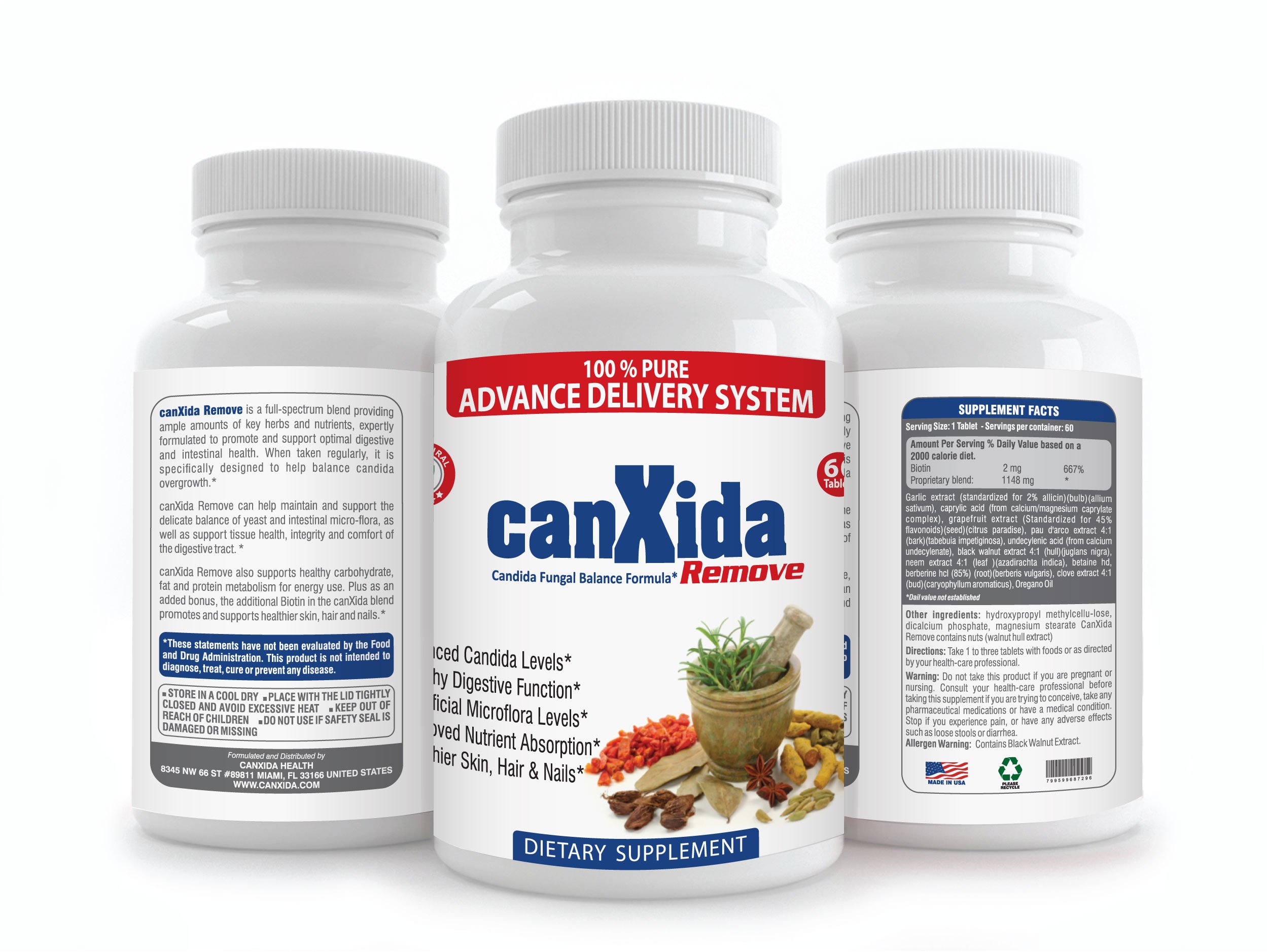 Dietary calcium intake and risk of fracture and osteoporosis: prospective longitudinal cohort study. BMJ. 2011;342:d1473. [PMC free article] [PubMed] [Google Scholar]
Dietary calcium intake and risk of fracture and osteoporosis: prospective longitudinal cohort study. BMJ. 2011;342:d1473. [PMC free article] [PubMed] [Google Scholar]
55. Bolland MJ, Avenell A, Baron JA, et al. Effect of calcium supplements on risk of myocardial infarction and cardiovascular events: meta-analysis. BMJ. 2010;341:c3691. [PMC free article] [PubMed] [Google Scholar]
56. Cosman F, de Beur SJ, LeBoff MS, et al.National Osteoporosis Foundation Clinician’s Guide to Prevention and Treatment of Osteoporosis. Osteoporos Int. 2014;25(10):2359–2381. [PMC free article] [PubMed] [Google Scholar]
57. Bolland MJ, Barber PA, Doughty RN, et al. Vascular events in healthy older women receiving calcium supplementation: randomised controlled trial. BMJ. 2008;336(7638):262–266. [PMC free article] [PubMed] [Google Scholar]
58. Drozd M, Cubbon R, Gierula J, et al. 54 Calcium Supplementation in Patients with Chronic Heart Failure: Is it Safe? Heart. 2014;100(Suppl 3):A31. [Google Scholar]
[Google Scholar]
59. West SL, Swan VJ, Jamal SA. Effects of calcium on cardiovascular events in patients with kidney disease and in a healthy population. Clin J Am Soc Nephrol. 2010;5(Suppl 1):S41–S47. [PubMed] [Google Scholar]
60. Meier C, Kränzlin ME. Calcium supplementation, osteoporosis and cardiovascular disease. Swiss Med Wkly. 2011;141:w13260. [PubMed] [Google Scholar]
61. Michaëlsson K, Melhus H, Warensjö Lemming E, Wolk A, Byberg L. Long term calcium intake and rates of all cause and cardiovascular mortality: community based prospective longitudinal cohort study. BMJ. 2013;346:f228. [PMC free article] [PubMed] [Google Scholar]
62. Lewis JR, Zhu K, Prince RL. Adverse events from calcium supplementation: relationship to errors in myocardial infarction self-reporting in randomized controlled trials of calcium supplementation. J Bone Miner Res. 2012;27(3):719–722. [PubMed] [Google Scholar]
63. Bergsma-Kadijk JA, van’t Veer P, Kampman E, Burema J. Calcium does not protect against colorectal neoplasia.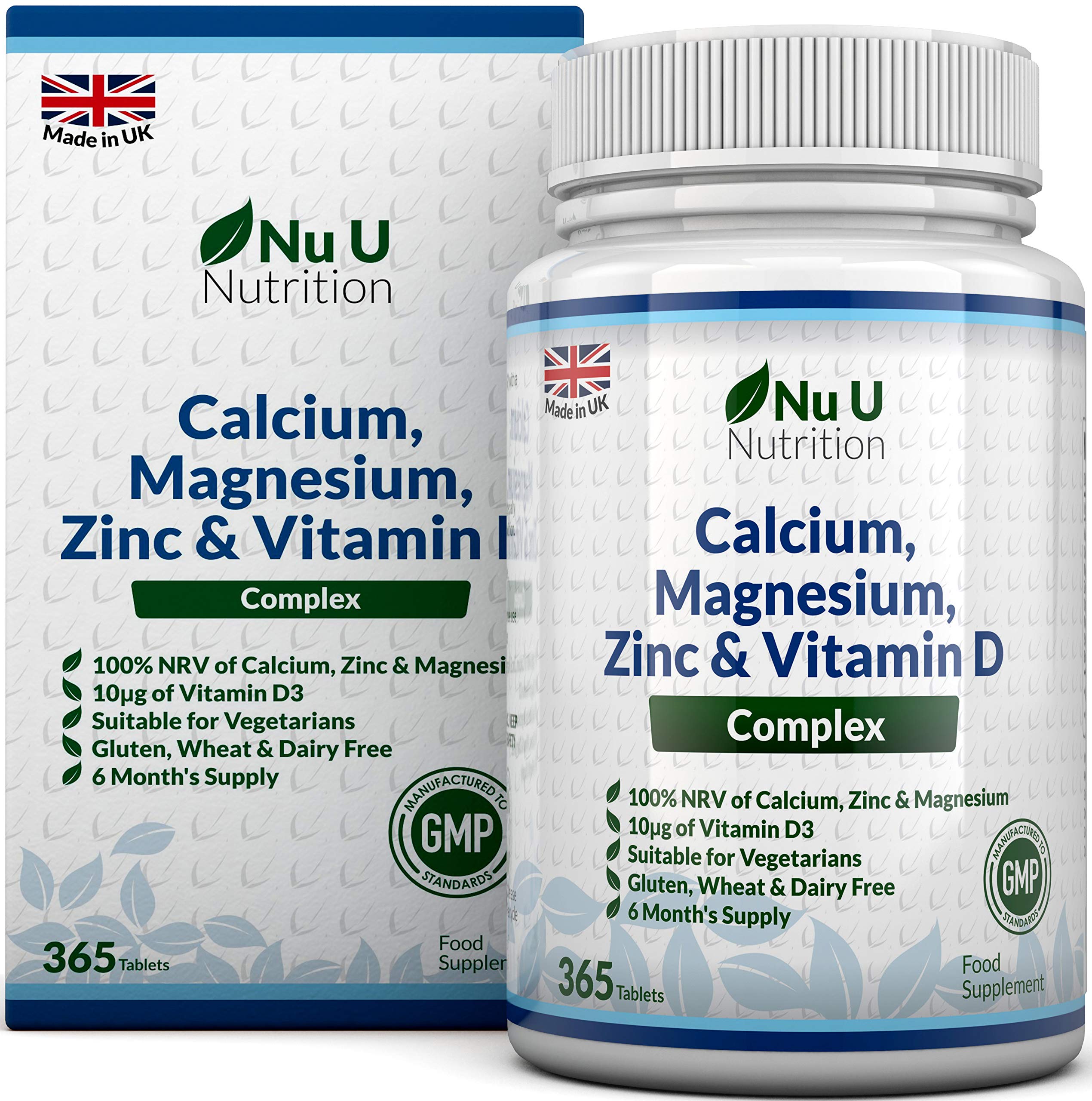 Epidemiology. 1996;7(6):590–597. [PubMed] [Google Scholar]
Epidemiology. 1996;7(6):590–597. [PubMed] [Google Scholar]
64. Worcester EM, Coe FL. Clinical practice. Calcium kidney stones. N Engl J Med. 2010;363(10):954–963. [PMC free article] [PubMed] [Google Scholar]
65. Haghighi A, Samimagham H, Gohardehi G. Calcium and vitamin D supplementation and risk of kidney stone formation in postmenopausal women. Iran J Kidney Dis. 2013;7(3):210–213. [PubMed] [Google Scholar]
66. Favus MJ. The risk of kidney stone formation: the form of calcium matters. Am J Clin Nutr. 2011;94(1):5–6. [PubMed] [Google Scholar]
67. Kakigi CL, Singh K, Wang SY, Enanoria WT, Lin SC. Self-reported Calcium Supplementation and Age-Related Macular Degeneration. JAMA Ophthalmol. 2015;133(7):746–754. [PubMed] [Google Scholar]
68. Compston J, Cooper A, Cooper C, et al. UK clinical guideline for the prevention and treatment of osteoporosis. Arch Osteoporos. 2017;12(1):43. [PMC free article] [PubMed] [Google Scholar]
69. Osteoporosis.org.nz Guidance on the Diagnosis and Management of Osteoporosis in New Zealand. [Accessed September 13, 2018]. Available from: http://osteoporosis.org.nz/resources/health-professionals/clinical-guidance/
[Accessed September 13, 2018]. Available from: http://osteoporosis.org.nz/resources/health-professionals/clinical-guidance/
70. Orimo H, Nakamura T, Hosoi T, et al. Japanese 2011 guidelines for prevention and treatment of osteoporosis – executive summary. Arch Osteoporos. 2012;7(1–2):3–20. [PMC free article] [PubMed] [Google Scholar]
71. Makras P, Vaiopoulos G, Lyritis GP. 2011 guidelines for the diagnosis and treatment of osteoporosis in Greece. J Musculoskelet Neuronal Interact. 2012;12(1):38–42. [PubMed] [Google Scholar]
72. Chinese Society of Osteoporosis and Bone Mineral Research Guideline of diagnosis and treatment of primary osteoporosis. Chin J Osteoporos Bone Miner Res. 2011;4(1):2–17. [Google Scholar]
73. Papaioannou A, Morin S, Cheung AM, et al. 2010 clinical practice guidelines for the diagnosis and management of osteoporosis in Canada: summary. Can Med Assoc J. 2010;182(17):1864–1873. [PMC free article] [PubMed] [Google Scholar]
Overview, Uses, Side Effects, Precautions, Interactions, Dosing and Reviews
Overview
Calcium is an essential nutrient found in many foods, such as dairy products.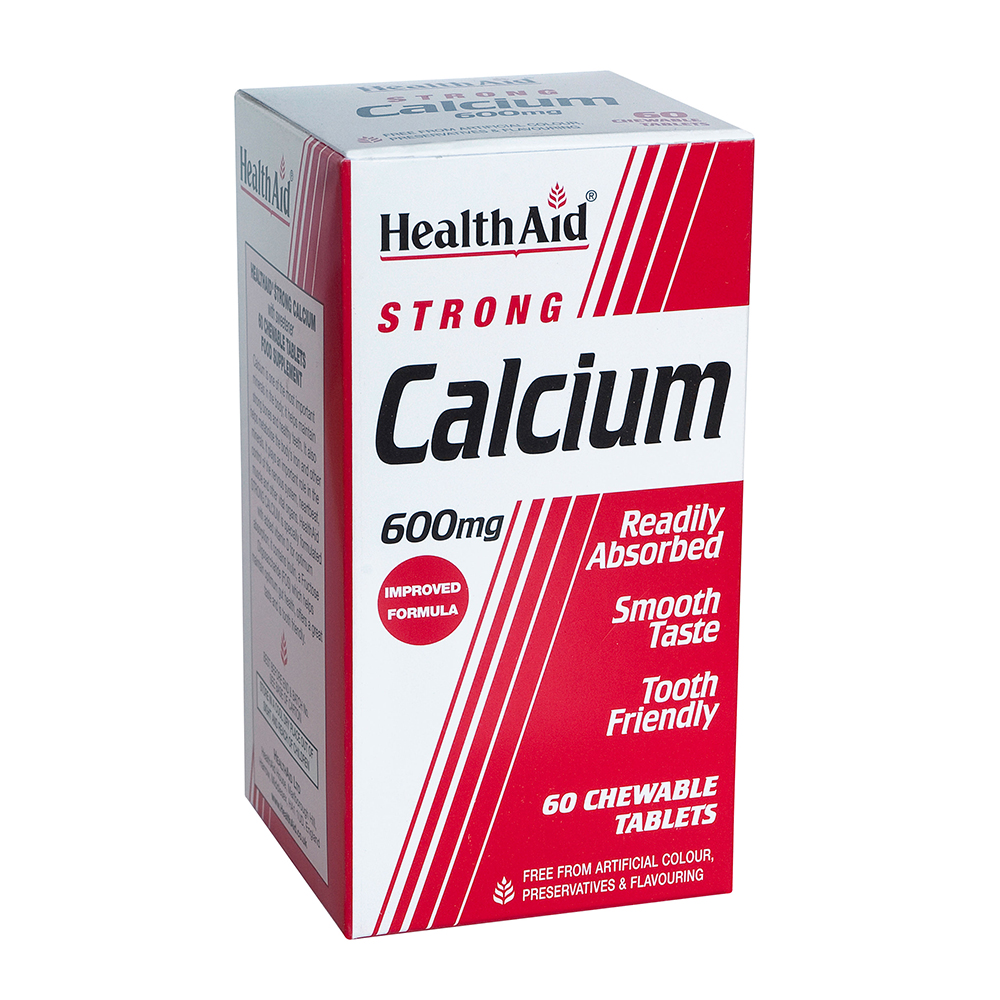 The bones and teeth contain over 99% of all calcium in the human body.
The bones and teeth contain over 99% of all calcium in the human body.
Bones are always breaking down and rebuilding. Calcium is needed for this process, but the concentration of calcium in the body tends to decline with age. Taking extra calcium helps the bones rebuild and stay strong. The heart, nerves, and blood-clotting systems also need calcium.
People commonly take calcium by mouth for the treatment and prevention of low calcium levels, muscle cramps, osteoporosis, softening of the bones, and PMS. It is also used for high blood pressure, cancer, stroke, and many other conditions, but there is no good scientific evidence to support many of these other uses.
In the US and Canada, foods that contain calcium and vitamin D are allowed to state that they might reduce the risk of osteoporosis.
Uses & Effectiveness ?
Effective for
- Indigestion (dyspepsia). Taking calcium carbonate by mouth as an antacid is effective for treating indigestion.

- High levels of potassium in the blood (hyperkalemia). Giving calcium gluconate by IV can reverse heart problems caused by high potassium levels. IV products can only be given by a healthcare provider.
- Low levels of calcium in the blood (hypocalcemia). Taking calcium by mouth and by IV is effective for treating and preventing low calcium levels. IV products can only be given by a healthcare provider.
- Kidney failure. Taking calcium carbonate or calcium acetate by mouth is effective for controlling high phosphate levels in the blood in people with kidney failure. Taking calcium by mouth also seems to help reduce blood pressure in people with kidney failure.
Likely Effective for
- Bone loss in people taking drugs called corticosteroids. Taking calcium and vitamin D by mouth seems to reduce bone density loss in people using corticosteroid drugs long-term.
- Overactive parathyroid (hyperparathyroidism). Taking calcium by mouth reduces parathyroid hormone levels in people with kidney failure and parathyroid hormone levels that are too high.

- Weak and brittle bones (osteoporosis). Consuming adequate amounts of calcium, both from the diet and supplements, is effective for preventing bone loss and treating osteoporosis. Taking calcium by mouth, alone or with vitamin D, also helps prevent fractures in people with osteoporosis.
- Premenstrual syndrome (PMS). Consuming adequate amounts of calcium, both from the diet and supplements, seems to significantly reduce mood swings, bloating, food cravings, and pain.
Possibly Effective for
- Colon cancer, rectal cancer. Taking calcium supplements by mouth or increasing intake from the diet seems to reduces the risk of colorectal cancer. But people with low levels of vitamin D don’t seem to benefit from calcium supplements, nor do people who are overweight or obese.
- Increasing bone strength in the unborn baby. Taking calcium supplements by mouth during pregnancy increases the bone mineral density of the baby when calcium intake from the diet is low.

- High blood pressure. Taking calcium supplements by mouth seems to reduce blood pressure by a small amount in people with or without high blood pressure.
- Softening of the bones (osteomalacia). Taking calcium by mouth seems to help reverse softening of the bones caused by very low calcium intake.
- A pregnancy complication marked by high blood pressure and protein in the urine (pre-eclampsia). Taking 1-2 grams of calcium by mouth daily seems to reduce the risk of pregnancy-related high blood pressure. It seems to be most helpful in those who are high risk and have low calcium levels.
- Softening of bones in children, often due to vitamin D deficiency (rickets). Taking calcium by mouth seems to help reverse softening of the bones in children with very low calcium intake.
- Preventing tooth loss (tooth retention). Taking calcium and vitamin D by mouth appears to help prevent tooth loss in older people.
Possibly Ineffective for
- Breast cancer.
 Taking calcium by mouth doesn’t reduce the risk for breast cancer.
Taking calcium by mouth doesn’t reduce the risk for breast cancer. - Fractures. Taking calcium by mouth, alone or with vitamin D, doesn’t seem to prevent fractures in older people who do not have osteoporosis.
- Obesity. Taking calcium by mouth doesn’t seem to help with weight loss.
- Death from any cause. Taking calcium supplements by mouth doesn’t seem to reduce the overall risk of death.
Side Effects
When taken by mouth: Calcium is likely safe when used in recommended amounts of about 1000-1200 mg daily. Calcium can cause some minor side effects such as belching or gas. But calcium is possibly unsafe when taken in doses above the daily tolerable upper intake level (UL). The UL is 2500 mg for adults ages 19-50 years and 2000 mg for adults over 50 years. Taking more than this daily can increase the chance of having serious side effects.
Special Precautions & Warnings:
Pregnancy and breast-feeding: Calcium is likely safe when taken by mouth in recommended amounts. But calcium is possibly unsafe when taken by mouth in doses above the daily tolerable upper intake level (UL). The UL is 3000 mg for those under 18 years of age and 2500 mg for those over 18 years of age. Higher doses might increase the risk of seizures in the infant. Be sure to consider total calcium intake from both dietary and supplemental sources of calcium. Avoid taking more than 1000-1200 mg of calcium from supplements daily unless prescribed by your doctor.
But calcium is possibly unsafe when taken by mouth in doses above the daily tolerable upper intake level (UL). The UL is 3000 mg for those under 18 years of age and 2500 mg for those over 18 years of age. Higher doses might increase the risk of seizures in the infant. Be sure to consider total calcium intake from both dietary and supplemental sources of calcium. Avoid taking more than 1000-1200 mg of calcium from supplements daily unless prescribed by your doctor.
Children: Calcium is likely safe when taken by mouth in recommended amounts. But calcium is possibly unsafe when taken by mouth in doses above the daily tolerable upper intake level (UL). The UL is 1000 mg for those 0-6 months old, 1500 mg for those 6-12 months old, 2500 mg for those 1-8 years old, and 3000 mg for those 9-18 years old. Children should consume enough calcium to meet daily requirements, but should not consume extra calcium.
Low acid levels in the stomach (achlorhydria): People with low levels of gastric acid absorb less calcium if calcium is taken on an empty stomach. People with low acid levels should take calcium supplements with meals.
People with low acid levels should take calcium supplements with meals.
Too much calcium in the blood (as in parathyroid gland disorders and sarcoidosis): Calcium should be avoided if you have a condition that causes high calcium levels. Taking calcium supplements can cause calcium levels to increase even more.
Kidney disorders: In people with kidney disorders, taking calcium supplements can increase calcium levels too much. Speak with a healthcare provider before taking calcium supplements.
Smoking: People who smoke absorb less calcium from the stomach and might require calcium supplements.
Stroke: Taking calcium supplements for 5 or more years might increase the chance of developing dementia in people who have had a stroke. More research is needed to know if calcium supplements should be avoided after a stroke.
Special Precautions and Warnings
When taken by mouth: Calcium is likely safe when used in recommended amounts of about 1000-1200 mg daily. Calcium can cause some minor side effects such as belching or gas. But calcium is possibly unsafe when taken in doses above the daily tolerable upper intake level (UL). The UL is 2500 mg for adults ages 19-50 years and 2000 mg for adults over 50 years. Taking more than this daily can increase the chance of having serious side effects.
Calcium can cause some minor side effects such as belching or gas. But calcium is possibly unsafe when taken in doses above the daily tolerable upper intake level (UL). The UL is 2500 mg for adults ages 19-50 years and 2000 mg for adults over 50 years. Taking more than this daily can increase the chance of having serious side effects.
Special Precautions & Warnings:
Pregnancy and breast-feeding: Calcium is likely safe when taken by mouth in recommended amounts. But calcium is possibly unsafe when taken by mouth in doses above the daily tolerable upper intake level (UL). The UL is 3000 mg for those under 18 years of age and 2500 mg for those over 18 years of age. Higher doses might increase the risk of seizures in the infant. Be sure to consider total calcium intake from both dietary and supplemental sources of calcium. Avoid taking more than 1000-1200 mg of calcium from supplements daily unless prescribed by your doctor.
Children: Calcium is likely safe when taken by mouth in recommended amounts. But calcium is possibly unsafe when taken by mouth in doses above the daily tolerable upper intake level (UL). The UL is 1000 mg for those 0-6 months old, 1500 mg for those 6-12 months old, 2500 mg for those 1-8 years old, and 3000 mg for those 9-18 years old. Children should consume enough calcium to meet daily requirements, but should not consume extra calcium.
But calcium is possibly unsafe when taken by mouth in doses above the daily tolerable upper intake level (UL). The UL is 1000 mg for those 0-6 months old, 1500 mg for those 6-12 months old, 2500 mg for those 1-8 years old, and 3000 mg for those 9-18 years old. Children should consume enough calcium to meet daily requirements, but should not consume extra calcium.
Low acid levels in the stomach (achlorhydria): People with low levels of gastric acid absorb less calcium if calcium is taken on an empty stomach. People with low acid levels should take calcium supplements with meals.
Too much calcium in the blood (as in parathyroid gland disorders and sarcoidosis): Calcium should be avoided if you have a condition that causes high calcium levels. Taking calcium supplements can cause calcium levels to increase even more.
Kidney disorders: In people with kidney disorders, taking calcium supplements can increase calcium levels too much. Speak with a healthcare provider before taking calcium supplements.
Smoking: People who smoke absorb less calcium from the stomach and might require calcium supplements.
Stroke: Taking calcium supplements for 5 or more years might increase the chance of developing dementia in people who have had a stroke. More research is needed to know if calcium supplements should be avoided after a stroke.
Interactions ?
Administering intravenous ceftriaxone and calcium together can result in life-threatening damage to the lungs and kidneys. Calcium should not be administered intravenously within 48 hours of intravenous ceftriaxone. This interaction is not a concern when calcium is taken by mouth.
Taking calcium along with dolutegravir can reduce blood levels of dolutegravir. This might decrease the effects of dolutegravir.
 To avoid this interaction, dolutegravir should be taken 2 hours before or 6 hours after taking calcium.
To avoid this interaction, dolutegravir should be taken 2 hours before or 6 hours after taking calcium.Taking calcium along with elvitegravir can reduce blood levels of elvitegravir. This might decrease the effects of elvitegravir. To avoid this interaction, elvitegravir should be taken 2 hours before or 2 hours after taking calcium.
Major Interaction
Do not take this combination
Calcium might decrease how well some antibiotics work. In the gut, calcium binds to antibiotics known as “quinolones.” This can decrease the amount of these drugs that the body absorbs. To avoid this interaction, take these drugs at least 2 hours before or 4 to 6 hours after calcium.
Calcium might decrease how well some antibiotics work. In the gut, calcium binds to antibiotics known as “tetracyclines.
 ” This can decrease the amount of these drugs that the body absorbs. To avoid this interaction, take these drugs at least 2 hours before or 4 to 6 hours after calcium.
” This can decrease the amount of these drugs that the body absorbs. To avoid this interaction, take these drugs at least 2 hours before or 4 to 6 hours after calcium.Calcium can decrease how much bisphosphonate the body absorbs, which can decrease the effects of bisphosphonates. To avoid this interaction, take bisphosphonates at least 30 minutes before calcium or at a different time of day.
Calcipotriene is a drug that is similar to vitamin D. Vitamin D helps the body absorb calcium. Taking calcium supplements along with calcipotriene might increase levels of calcium too much.
Calcium can affect your heart. Digoxin is used to help your heart beat stronger. Taking calcium along with digoxin might increase the effects of digoxin and lead to an irregular heartbeat. If you are taking digoxin, talk to your doctor before taking calcium supplements.

Taking large amounts of calcium along with diltiazem might decrease the effects of diltiazem.
Calcium can decrease how much levothyroxine the body absorbs. Taking calcium along with levothyroxine might decrease the effects of levothyroxine. Levothyroxine and calcium should be taken at least 4 hours apart.
Taking calcium with sotalol can decrease how much sotalol the body absorbs. Taking calcium along with sotalol might decrease the effects of sotalol. To avoid this interaction, take calcium at least 2 hours before or 4 hours after taking sotalol.
Taking large amounts of calcium along with verapamil might decrease the effects of verapamil.
Some “water pills” increase the amount of calcium in the body.
 Taking large amounts of calcium with some “water pills” might cause there to be too much calcium in the body. This could cause serious side effects, including kidney problems.
Taking large amounts of calcium with some “water pills” might cause there to be too much calcium in the body. This could cause serious side effects, including kidney problems.Calcium citrate can increase how much aluminum the body absorbs from aluminum hydroxide. This increase in aluminum levels can cause serious side effects, especially in people with kidney disease. But not all forms of calcium have this effect. Calcium acetate does not appear to increase aluminum levels.
Long-term lithium use can increase calcium levels in the blood. Taking lithium with calcium supplements might increase calcium levels too much.
Taking calcium along with raltegravir for several months might reduce blood levels of raltegravir and decrease its effects. Taking a single dose of calcium along with raltegravir does not appear to affect blood levels of raltegravir.

Moderate Interaction
Be cautious with this combination
Calcium channel blockers are a type of medicine used for high blood pressure. Calcium may decrease the effects of calcium channel blockers when given by IV. But taking calcium supplements by mouth or consuming foods containing calcium does not seem to have this effect.
Minor Interaction
Be watchful with this combination
Dosing
Calcium is an essential nutrient found in many foods, including dairy products, kale, broccoli, and calcium-enriched citrus juices. The amount that should be consumed on a daily basis is called the recommended dietary allowance (RDA). For all adults 19-50 years of age and for males 51-70 years of age, the RDA is 1000 mg. For females 51 years and older, the RDA is 1200 mg. While pregnant and breast-feeding, the RDA is 1300 mg for those under 19 years of age and 1000 mg for those 19 years and older. In children, the RDA depends on age.
In supplements, calcium has most often been used by adults in doses of 500-1500 mg by mouth daily. Don’t take more than 2000-2500 mg daily unless under the supervision of a healthcare provider. Speak with a healthcare provider to find out what type of product and dose might be best for a specific condition.
View References
You Might Also Like
View More
CONDITIONS OF USE AND IMPORTANT INFORMATION: This information is meant to supplement, not replace advice from your doctor or healthcare provider and is not meant to cover all possible uses, precautions, interactions or adverse effects. This information may not fit your specific health circumstances. Never delay or disregard seeking professional medical advice from your doctor or other qualified health care provider because of something you have read on WebMD. You should always speak with your doctor or health care professional before you start, stop, or change any prescribed part of your health care plan or treatment and to determine what course of therapy is right for you.
This copyrighted material is provided by Natural Medicines Comprehensive Database Consumer Version. Information from this source is evidence-based and objective, and without commercial influence. For professional medical information on natural medicines, see Natural Medicines Comprehensive Database Professional Version.
© Therapeutic Research Faculty 2020.
Calcium gluconate – description of the substance, pharmacology, use, contraindications, formula
Contents
Structural formula
Russian name
English name
Latin name
chemical name
Gross formula
Pharmacological group of the substance Calcium gluconate
Nosological classification
CAS code
pharmachologic effect
Characteristic
Pharmacology
Application of the substance Calcium gluconate
Contraindications
Application restrictions
side effects of calcium gluconate
Interaction
Dosage and administration
special instructions
Trade names with the active substance Calcium gluconate
Structural formula
Russian name
Calcium gluconate
English name
Calcium gluconate
Latin name
Calcii gluconas ( genus Calcii gluconatis)
Chemical name
Calcium salt of gluconic acid
Gross formula
C 12 H 9006 9 22 CaO 14
Pharmacological group of the substance Calcium gluconate
Macro- and microelements
Nosological classification
ICD-10 code list
E20 Hypoparathyroidism
E55.
 0 Rickets active
0 Rickets activeE58 Nutritional calcium deficiency
E83.3 Disorders of phosphorus metabolism
E83.5 Disorders of calcium metabolism
E83.
 5.1* Hypocalcemia
5.1* HypocalcemiaE88.8 Other specified metabolic disorders
G70.9 Disorder of neuromuscular junction, unspecified
I77.9 Disorder of arteries and arterioles, unspecified
I78.
 8 Other diseases of capillaries
8 Other diseases of capillariesI87.9 Disorder of vein, unspecified
K02 Dental caries
K03 Other diseases of dental hard tissues
K05.
 4 Periodontal disease
4 Periodontal diseaseK12.1 Other forms of stomatitis
K71 Liver toxicity
K75.8 Other specified inflammatory diseases of liver
M82.
 1 Osteoporosis in endocrine disorders (E00-E34+)
1 Osteoporosis in endocrine disorders (E00-E34+)M83.9 Adult osteomalacia, unspecified
N05 Nephritic syndrome, unspecified
N95.1 Menopausal and climacteric conditions of women
O15 Eclampsia
O25 Malnutrition in pregnancy
R29.
 0 Tetany
0 TetanyR58 Bleeding, not elsewhere classified
R60.0 Localized edema
T56.8 Other metals
T65.
 8 Other specified substances
8 Other specified substancesT78.4 Allergy, unspecified
Z100* CLASS XXII Surgical practice
Z39.1 Nursing mother care and examination
CAS code
299-28-5
Pharmacological action
Pharmacological action –
hemostatic , detoxifying , antiallergic , anti-inflammatory , reducing vascular fragility and permeability .
Characteristics
White granular or crystalline powder, odorless and tasteless. Slowly soluble in cold water (1:50), easily soluble in boiling water (1:5), practically insoluble in ethanol and ether. Contains 9% calcium. Molecular weight 430.37.
Pharmacology
Replenishes relative or absolute calcium deficiency. Calcium ions are involved in the transmission of nerve impulses, in the contraction of skeletal and smooth muscles, myocardium, in blood coagulation and other physiological processes, in the formation and preservation of the integrity of bone tissue (the intercellular bone substance contains a large amount of calcium salts, which, together with the collagen protein ossein, provides hardness and elasticity).
Application of the substance Calcium gluconate
Hypocalcemia, parathyroid insufficiency (latent tetany, osteoporosis), vitamin D metabolism disorders, rickets (spasmophilia, osteomalacia), correction of hyperphosphatemia in patients with chronic renal failure, increased need for calcium (pregnancy, lactation) , growth period), insufficient intake of calcium from food, impaired calcium metabolism, incl. in the postmenopausal period, increased excretion of calcium (chronic diarrhea, secondary hypocalcemia, including against the background of long-term use of certain diuretics, anticonvulsants or glucocorticoids), myasthenia gravis (as part of complex therapy), allergic diseases, bleeding, increased vascular permeability, parenchymal hepatitis, toxic liver damage, nephritis, eclampsia, poisoning with magnesium salts, oxalic and fluoric acids.
in the postmenopausal period, increased excretion of calcium (chronic diarrhea, secondary hypocalcemia, including against the background of long-term use of certain diuretics, anticonvulsants or glucocorticoids), myasthenia gravis (as part of complex therapy), allergic diseases, bleeding, increased vascular permeability, parenchymal hepatitis, toxic liver damage, nephritis, eclampsia, poisoning with magnesium salts, oxalic and fluoric acids.
In dentistry: acute inflammatory processes accompanied by edema, postoperative period (to reduce edema), remineralizing therapy for the prevention and treatment of caries and non-carious lesions of the tooth, allergic diseases, prevention of postoperative bleeding.
Contraindications
Hypersensitivity, hypercalcemia (calcium concentration should not exceed 12 mg% or 6 mEq/l), severe hypercalciuria, calcium nephrourolithiasis, thrombophlebitis, thrombosis, sarcoidosis, concomitant use of cardiac glycosides (risk of arrhythmias).
Restrictions on use
Dehydration, electrolyte disturbances (risk of hypercalcemia), diarrhea, malabsorption syndrome, calcium nephrourolithiasis (history), slight hypercalciuria, moderate chronic renal failure, chronic heart failure, widespread atherosclerosis, hypercoagulability; for i / m administration – children’s age (due to the risk of necrosis).
Side effects of the substance Calcium gluconate
Ingestion – constipation, irritation of the gastrointestinal mucosa. When administered parenterally – nausea, vomiting, diarrhea, bradycardia; with intravenous administration – a feeling of heat, first in the oral cavity, and then throughout the body; with i / m administration – infiltrates and necrosis at the injection site.
Interactions
Calcium gluconate forms complexes with tetracycline antibiotics and neutralizes their antibacterial effect when used together.
Method of administration and doses
In / in, in / m, inside, topically by electrophoresis. Inside (before meals) 2-3 times a day: adults – 1-3 g or more; children under 1 year old – 0.5 g, 2-4 years old – 1 g, 5-6 years old – 1-1.5 g, 7-9 years old – 1.5-2 g, 10-14 years old – 2-3 d. In/m, in/in slowly over 2–3 minutes (the solution is pre-warmed to body temperature), adults are administered 5–10 ml of a 10% solution daily, every other day or two days, depending on the indications. Children, in/in slowly from 1 to 5 ml of a 10% solution every 2-3 days, depending on age.
Inside (before meals) 2-3 times a day: adults – 1-3 g or more; children under 1 year old – 0.5 g, 2-4 years old – 1 g, 5-6 years old – 1-1.5 g, 7-9 years old – 1.5-2 g, 10-14 years old – 2-3 d. In/m, in/in slowly over 2–3 minutes (the solution is pre-warmed to body temperature), adults are administered 5–10 ml of a 10% solution daily, every other day or two days, depending on the indications. Children, in/in slowly from 1 to 5 ml of a 10% solution every 2-3 days, depending on age.
For remineralizing therapy 10% solution in the form of applications or by electrophoresis for 10-15 minutes on the tooth surface.
Special instructions
Calcium gluconate is similar in effect to calcium chloride, but is less irritating.
Trade names with active substance Calcium gluconate
Reset filters
Lek. form
All lek. Forms Solution for intravenous and intramuscular injection Substance-powder Substance-powder for the manufacture of means for parenteral administration Substance-powder for the manufacture of means for oral administration Tablets Chewable tablets
Dosage
All dosages 0. 5 g 100 mg/ml 500 mg No dosage
5 g 100 mg/ml 500 mg No dosage
Manufacturer
All manufacturers of the Armavir FCE Armavir Biological Factory FSUE B. Brown Melzungen Binnofarm AO Binopharm Biofarmkombinat LLC Biosynthesis OAO Biosynthesis PAO Velfarm Voropharm OAO Grotex Dalhimfarm Giangxyan Pharmaceur Tsevtskiy Plant OJSC Concern Mir LUMI LLUMI [G. St. Petersburg] Medisorb AO Medisorb ZAO Moscow Pharmaceutical Factory Moskhimfarmpreparaty im. ON THE. Semashko Novosibkhimfarm JSC Novosibkhimfarm OJSC Renewal of PFC JSC Renewal of PFC CJSC Obolenskoye – a pharmaceutical company JSC Obolenskoye – a pharmaceutical company CJSC Ozone LLC Ozone Pharm LLC Pyurak Glucochem North China Pharmaceutical Corporation Tatkhimfarmpreparaty JSC Tatkhimfarmpreparaty JSC Tyumen Chemical and Pharmaceutical Plant Uralbiopharm OJSC Usolye-Sibirsky CPP JSC Pharmstandard- Leksredstva Zhejiang Ruibang Laboratories Ellara LLC Eskom NPK OJSC
Calcium gluconate – description of the substance, pharmacology, use, contraindications, formula
Contents
Structural formula
Russian name
English name
Latin name
chemical name
Gross formula
Pharmacological group of the substance Calcium gluconate
Nosological classification
CAS code
pharmachologic effect
Characteristic
Pharmacology
Application of the substance Calcium gluconate
Contraindications
Application restrictions
side effects of calcium gluconate
Interaction
Dosage and administration
special instructions
Trade names with the active substance Calcium gluconate
Structural formula
Russian name
Calcium gluconate
English name
Calcium gluconate
Latin name
Calcii gluconas ( genus Calcii gluconatis)
Chemical name
Calcium salt of gluconic acid
Gross formula
C 12 H 9006 9 22 CaO 14
Pharmacological group of the substance Calcium gluconate
Macro- and microelements
Nosological classification
ICD-10 code list
E20 Hypoparathyroidism
E55.
 0 Rickets active
0 Rickets activeE58 Nutritional calcium deficiency
E83.3 Disorders of phosphorus metabolism
E83.5 Disorders of calcium metabolism
E83.
 5.1* Hypocalcemia
5.1* HypocalcemiaE88.8 Other specified metabolic disorders
G70.9 Disorder of neuromuscular junction, unspecified
I77.9 Disorder of arteries and arterioles, unspecified
I78.
 8 Other diseases of capillaries
8 Other diseases of capillariesI87.9 Disorder of vein, unspecified
K02 Dental caries
K03 Other diseases of dental hard tissues
K05.
 4 Periodontal disease
4 Periodontal diseaseK12.1 Other forms of stomatitis
K71 Liver toxicity
K75.8 Other specified inflammatory diseases of liver
M82.
 1 Osteoporosis in endocrine disorders (E00-E34+)
1 Osteoporosis in endocrine disorders (E00-E34+)M83.9 Adult osteomalacia, unspecified
N05 Nephritic syndrome, unspecified
N95.1 Menopausal and climacteric conditions of women
O15 Eclampsia
O25 Malnutrition in pregnancy
R29.
 0 Tetany
0 TetanyR58 Bleeding, not elsewhere classified
R60.0 Localized edema
T56.8 Other metals
T65.
 8 Other specified substances
8 Other specified substancesT78.4 Allergy, unspecified
Z100* CLASS XXII Surgical practice
Z39.1 Nursing mother care and examination
CAS code
299-28-5
Pharmacological action
Pharmacological action –
hemostatic , detoxifying , antiallergic , anti-inflammatory , reducing vascular fragility and permeability .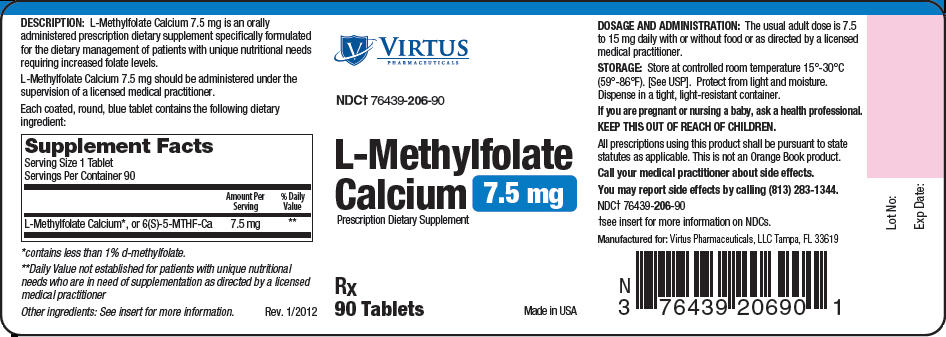
Characteristics
White granular or crystalline powder, odorless and tasteless. Slowly soluble in cold water (1:50), easily soluble in boiling water (1:5), practically insoluble in ethanol and ether. Contains 9% calcium. Molecular weight 430.37.
Pharmacology
Replenishes relative or absolute calcium deficiency. Calcium ions are involved in the transmission of nerve impulses, in the contraction of skeletal and smooth muscles, myocardium, in blood coagulation and other physiological processes, in the formation and preservation of the integrity of bone tissue (the intercellular bone substance contains a large amount of calcium salts, which, together with the collagen protein ossein, provides hardness and elasticity).
Application of the substance Calcium gluconate
Hypocalcemia, parathyroid insufficiency (latent tetany, osteoporosis), vitamin D metabolism disorders, rickets (spasmophilia, osteomalacia), correction of hyperphosphatemia in patients with chronic renal failure, increased need for calcium (pregnancy, lactation) , growth period), insufficient intake of calcium from food, impaired calcium metabolism, incl. in the postmenopausal period, increased excretion of calcium (chronic diarrhea, secondary hypocalcemia, including against the background of long-term use of certain diuretics, anticonvulsants or glucocorticoids), myasthenia gravis (as part of complex therapy), allergic diseases, bleeding, increased vascular permeability, parenchymal hepatitis, toxic liver damage, nephritis, eclampsia, poisoning with magnesium salts, oxalic and fluoric acids.
in the postmenopausal period, increased excretion of calcium (chronic diarrhea, secondary hypocalcemia, including against the background of long-term use of certain diuretics, anticonvulsants or glucocorticoids), myasthenia gravis (as part of complex therapy), allergic diseases, bleeding, increased vascular permeability, parenchymal hepatitis, toxic liver damage, nephritis, eclampsia, poisoning with magnesium salts, oxalic and fluoric acids.
In dentistry: acute inflammatory processes accompanied by edema, postoperative period (to reduce edema), remineralizing therapy for the prevention and treatment of caries and non-carious lesions of the tooth, allergic diseases, prevention of postoperative bleeding.
Contraindications
Hypersensitivity, hypercalcemia (calcium concentration should not exceed 12 mg% or 6 mEq/l), severe hypercalciuria, calcium nephrourolithiasis, thrombophlebitis, thrombosis, sarcoidosis, concomitant use of cardiac glycosides (risk of arrhythmias).
Restrictions on use
Dehydration, electrolyte disturbances (risk of hypercalcemia), diarrhea, malabsorption syndrome, calcium nephrourolithiasis (history), slight hypercalciuria, moderate chronic renal failure, chronic heart failure, widespread atherosclerosis, hypercoagulability; for i / m administration – children’s age (due to the risk of necrosis).
Side effects of the substance Calcium gluconate
Ingestion – constipation, irritation of the gastrointestinal mucosa. When administered parenterally – nausea, vomiting, diarrhea, bradycardia; with intravenous administration – a feeling of heat, first in the oral cavity, and then throughout the body; with i / m administration – infiltrates and necrosis at the injection site.
Interactions
Calcium gluconate forms complexes with tetracycline antibiotics and neutralizes their antibacterial effect when used together.
Method of administration and doses
In / in, in / m, inside, topically by electrophoresis. Inside (before meals) 2-3 times a day: adults – 1-3 g or more; children under 1 year old – 0.5 g, 2-4 years old – 1 g, 5-6 years old – 1-1.5 g, 7-9 years old – 1.5-2 g, 10-14 years old – 2-3 d. In/m, in/in slowly over 2–3 minutes (the solution is pre-warmed to body temperature), adults are administered 5–10 ml of a 10% solution daily, every other day or two days, depending on the indications. Children, in/in slowly from 1 to 5 ml of a 10% solution every 2-3 days, depending on age.
Inside (before meals) 2-3 times a day: adults – 1-3 g or more; children under 1 year old – 0.5 g, 2-4 years old – 1 g, 5-6 years old – 1-1.5 g, 7-9 years old – 1.5-2 g, 10-14 years old – 2-3 d. In/m, in/in slowly over 2–3 minutes (the solution is pre-warmed to body temperature), adults are administered 5–10 ml of a 10% solution daily, every other day or two days, depending on the indications. Children, in/in slowly from 1 to 5 ml of a 10% solution every 2-3 days, depending on age.
For remineralizing therapy 10% solution in the form of applications or by electrophoresis for 10-15 minutes on the tooth surface.
Special instructions
Calcium gluconate is similar in effect to calcium chloride, but is less irritating.
Trade names with active substance Calcium gluconate
Reset filters
Lek. form
All lek. Forms Solution for intravenous and intramuscular injection Substance-powder Substance-powder for the manufacture of means for parenteral administration Substance-powder for the manufacture of means for oral administration Tablets Chewable tablets
Dosage
All dosages 0.




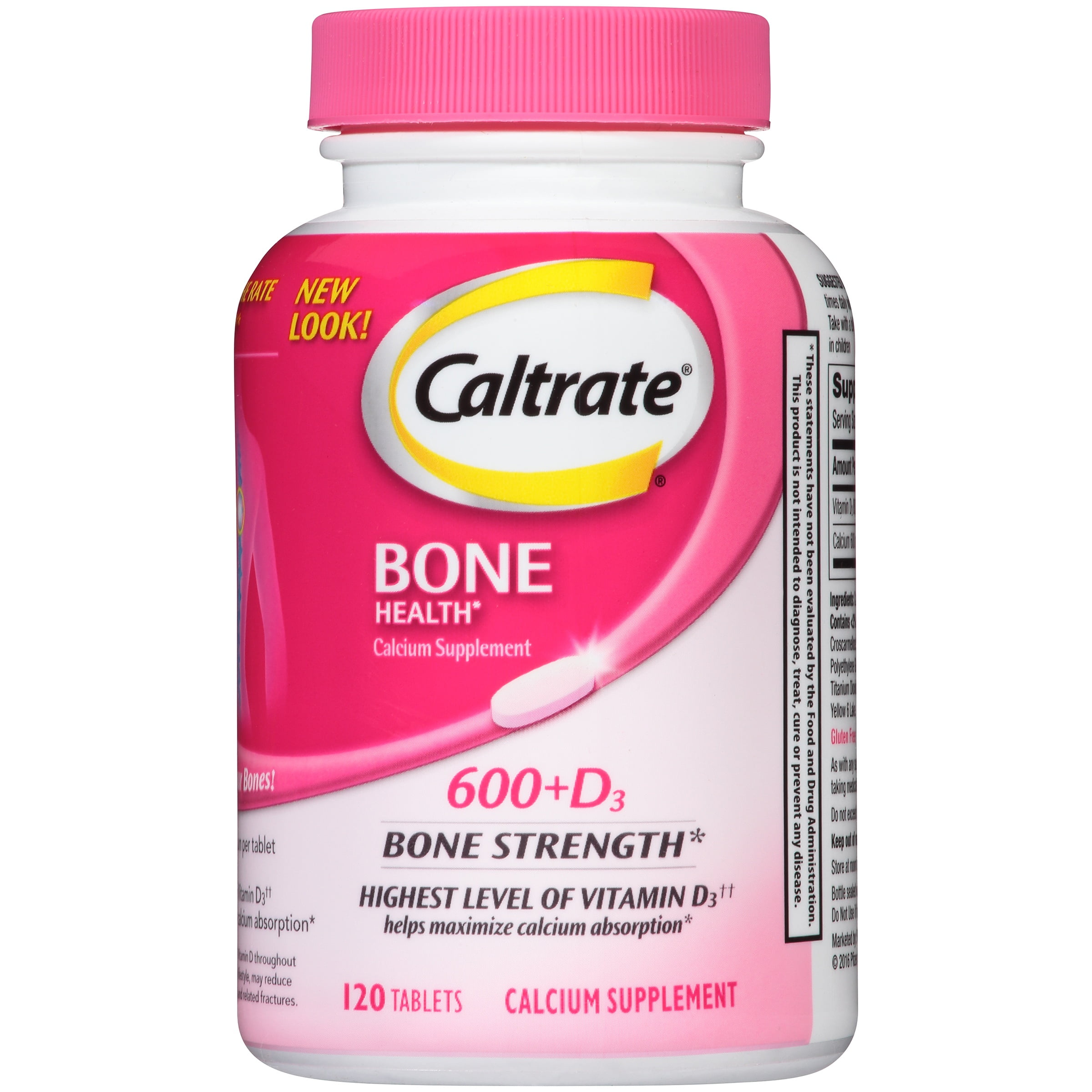 Taking calcium by mouth doesn’t reduce the risk for breast cancer.
Taking calcium by mouth doesn’t reduce the risk for breast cancer. To avoid this interaction, dolutegravir should be taken 2 hours before or 6 hours after taking calcium.
To avoid this interaction, dolutegravir should be taken 2 hours before or 6 hours after taking calcium.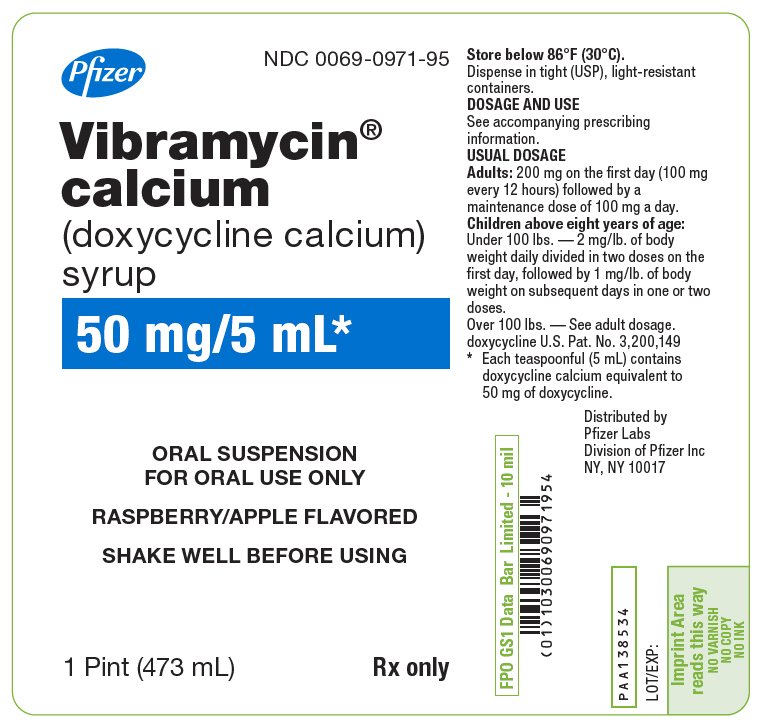 ” This can decrease the amount of these drugs that the body absorbs. To avoid this interaction, take these drugs at least 2 hours before or 4 to 6 hours after calcium.
” This can decrease the amount of these drugs that the body absorbs. To avoid this interaction, take these drugs at least 2 hours before or 4 to 6 hours after calcium.
 Taking large amounts of calcium with some “water pills” might cause there to be too much calcium in the body. This could cause serious side effects, including kidney problems.
Taking large amounts of calcium with some “water pills” might cause there to be too much calcium in the body. This could cause serious side effects, including kidney problems.
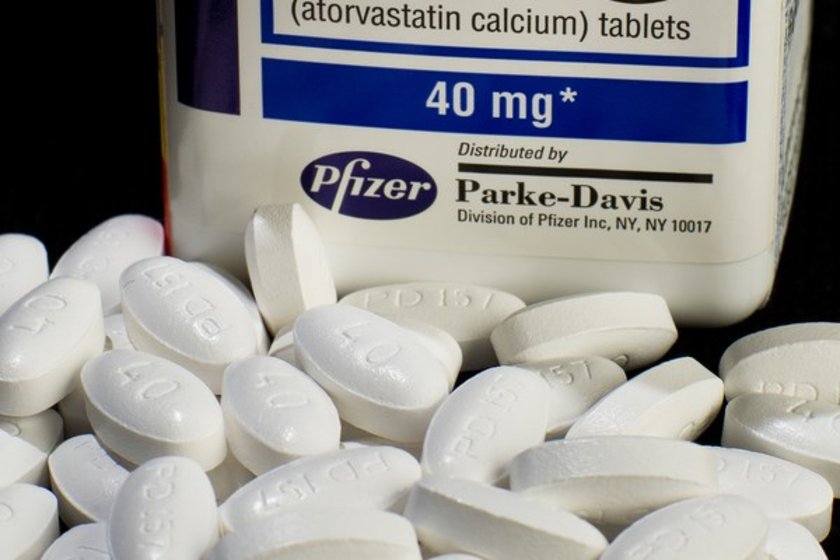 0 Rickets active
0 Rickets active 5.1* Hypocalcemia
5.1* Hypocalcemia 8 Other diseases of capillaries
8 Other diseases of capillaries 1 Osteoporosis in endocrine disorders (E00-E34+)
1 Osteoporosis in endocrine disorders (E00-E34+) 0 Tetany
0 Tetany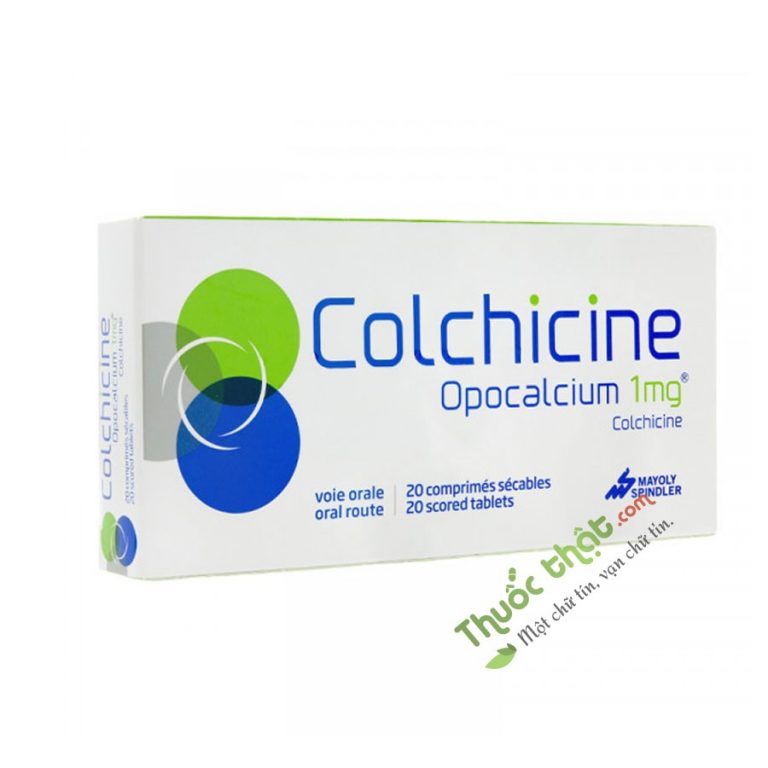 8 Other specified substances
8 Other specified substances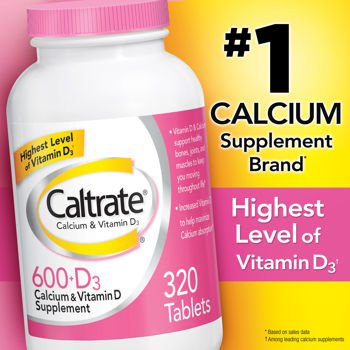 0 Rickets active
0 Rickets active 5.1* Hypocalcemia
5.1* Hypocalcemia 8 Other diseases of capillaries
8 Other diseases of capillaries 4 Periodontal disease
4 Periodontal disease 1 Osteoporosis in endocrine disorders (E00-E34+)
1 Osteoporosis in endocrine disorders (E00-E34+) 0 Tetany
0 Tetany 8 Other specified substances
8 Other specified substances